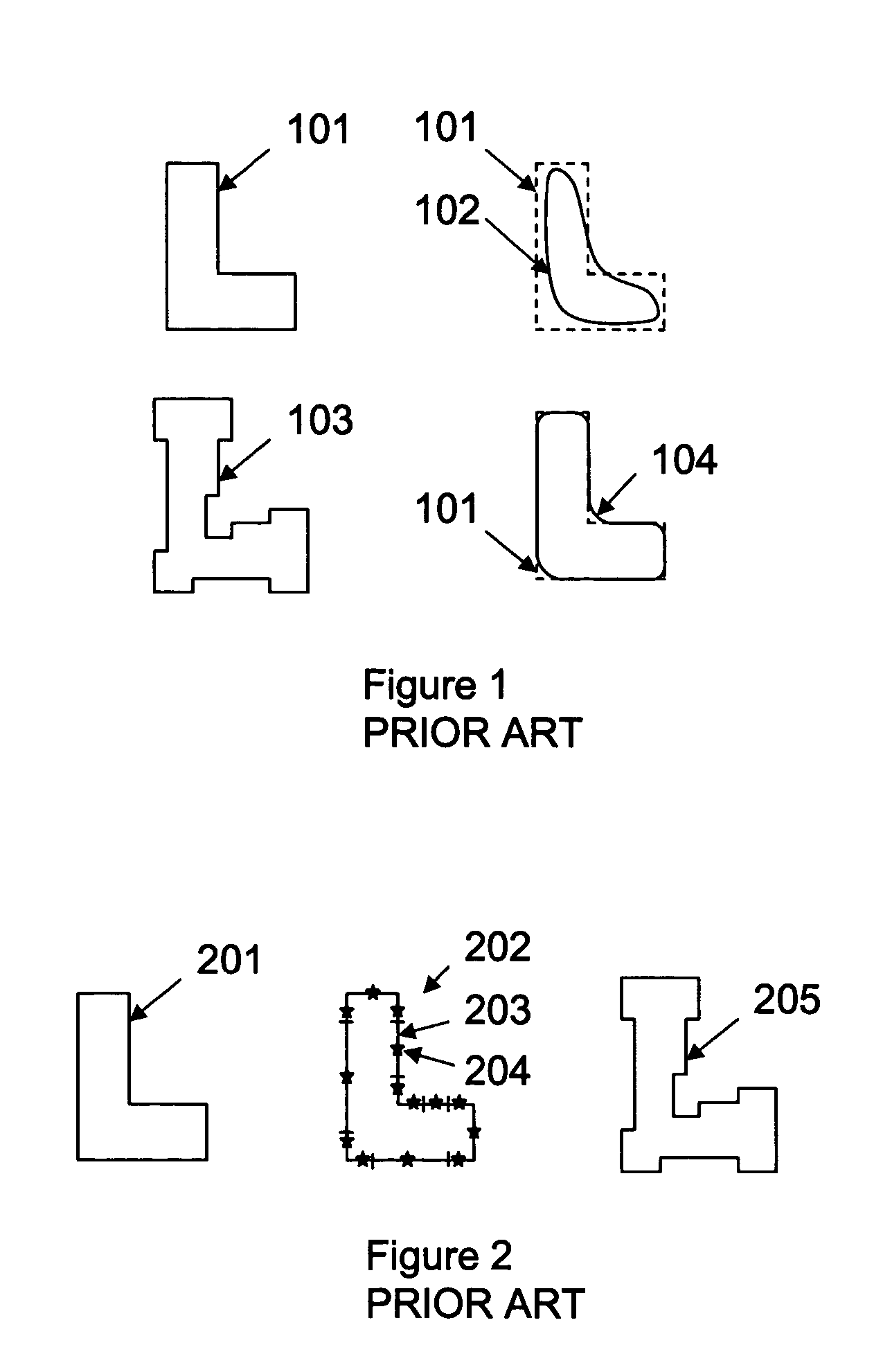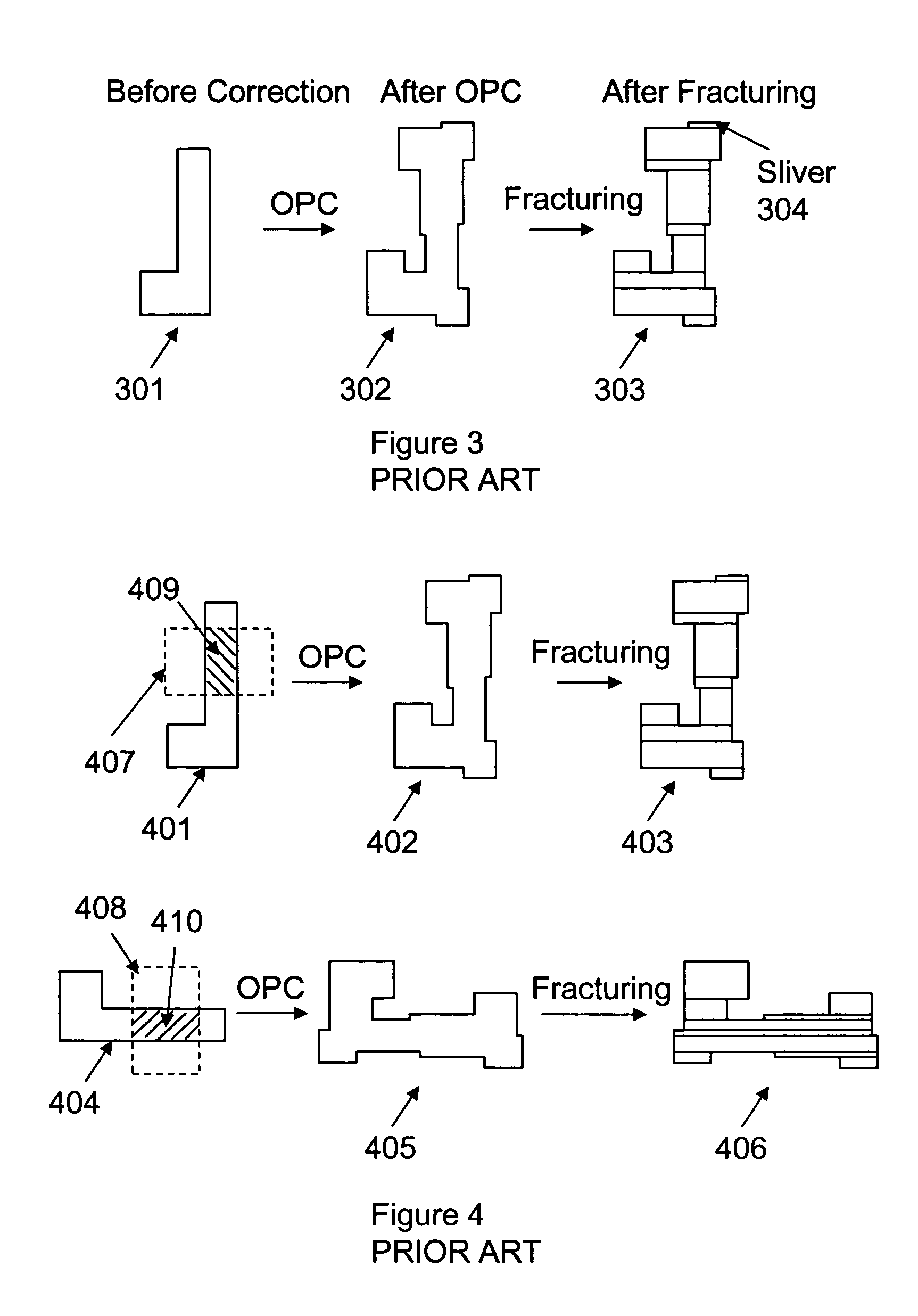Mask data preparation
a mask data and mask technology, applied in the field of mask data preparation, can solve the problems of increasing the distortion in the pattern transfer process, creating problems, and printing small features on the wafer
- Summary
- Abstract
- Description
- Claims
- Application Information
AI Technical Summary
Benefits of technology
Problems solved by technology
Method used
Image
Examples
Embodiment Construction
[0040] A technique described in FIG. 5 was developed to address the issues encountered during the fracturing of data for vector-scan mask writer. The polygon 501 before correction is first fractured in smaller shapes 502. Some of the edges of the shapes are abutting the original polygon. During the OPC step, the shapes are modified into 503 and no sliver was created as shown in FIG. 5. Fracturing into shapes before OPC presents some important advantages. First, the shapes can be chosen such that even with the largest OPC correction, the shape will not turn into a shape difficult to manufacture for the vector-scan e-beam mask writer. In FIG. 6a, 601 represents a shape after fracturing which is a part of a larger polygon 602 (not completely drawn on the figure). During the OPC step, the shape 602 could receive a maximum inner correction or a maximum outer correction as described in FIG. 6a. 603 represents the shape after maximum inner correction and 604 represents the shape after maxi...
PUM
| Property | Measurement | Unit |
|---|---|---|
| wavelengths | aaaaa | aaaaa |
| wavelengths | aaaaa | aaaaa |
| wavelengths | aaaaa | aaaaa |
Abstract
Description
Claims
Application Information
 Login to View More
Login to View More - R&D
- Intellectual Property
- Life Sciences
- Materials
- Tech Scout
- Unparalleled Data Quality
- Higher Quality Content
- 60% Fewer Hallucinations
Browse by: Latest US Patents, China's latest patents, Technical Efficacy Thesaurus, Application Domain, Technology Topic, Popular Technical Reports.
© 2025 PatSnap. All rights reserved.Legal|Privacy policy|Modern Slavery Act Transparency Statement|Sitemap|About US| Contact US: help@patsnap.com



